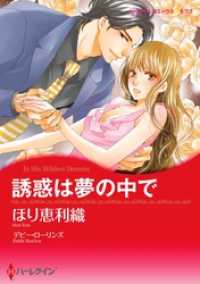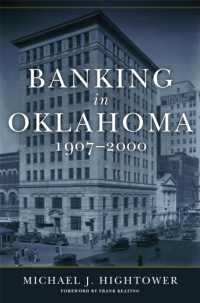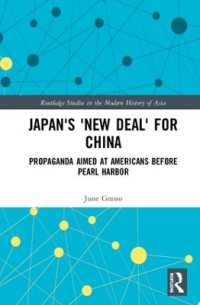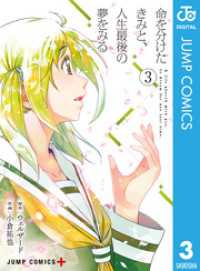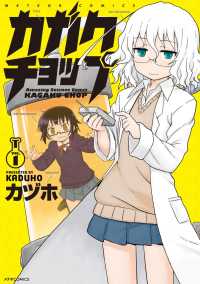基本説明
The eighteen readings, graded on the basis of complexity of vocabulary, grammar and syntax and taken from a variety of sources to represent modern Korean literary and popular writing, will inspire students to continue reading independently in Korean.
Full Description
The Routledge Intermediate Korean Reader is a comprehensive reader designed to provide varied, stimulating and up-to-date reading material for learners of Korean at the intermediate level.
The Korean Reader provides a bridge between basic literacy skills and the ability to read full novels and newspapers in Korean. It consists of eighteen readings, graded on the basis of complexity of vocabulary, grammar and syntax. These readings present a range of different text types representative of modern Korean literary and popular writing which will inspire learners to continue reading independently in Korean.
It is ideal for learners who already possess knowledge of essential grammar and vocabulary and who wish to expand their knowledge of the language through contextualized reading material.
Key features include:
extracts of modern literature and newspaper/magazine articles
vocabulary lists for quick reference
short grammar explanations of any complicated structures
comprehension and discussion questions
full answer key at the back.
Suitable for both class use and independent study, The Routledge Intermediate Korean Reader is an essential tool for facilitating vocabulary learning and increasing reading proficiency.
The Reader is ideal for learners at the intermediate-mid or intermediate high who are aiming to achieve advanced proficiency according to the ACTFL proficiency guidelines. In terms of the Common European Framework this equates to a progression from A2 through to B1/B2.
Contents
Introduction Section 1 Reading 1: 단군신화 (The Myth of Tangun)This chapter contains a modern version of the Korean foundation myth - the story of Tangun. The story is fascinating and, put in the modern context, raises important questions of Korean identity. Reading 2: 심청이 이야기 / 흥부전 (The Story of Shim Chŏng / Hŭngbu-jŏn) This chapter contains two traditional Korean tales rendered in modern versions. Although traditional, the stories have obvious relevance to the present day. Reading 3: 추석과 관련된 여러 가지 통계 (Statistics about Ch'usŏk) The reading in this chapter is a newspaper article presenting a number of statistics related to the Korean "thanksgiving" holiday Ch'usŏk. Through the statistics, we get a glimpse of Korean customs and culture that surround this special holiday. Reading 4: 7년 전보다 더 세진 '욘사마 열풍' (The Craze for "Yonsama" - back after seven years) This chapter looks at the popularity of Korean star Bae Yong Joon in Japan. The article raises the broader question of the growing popularity of Korean popular culture particularly in East Asia - a phenomenon known as "Hallyu" ("The Korean Wave"). Reading 5: 영국과 한국의 거리 (The Distance between Britain and Korea) This reading looks at connections that Britain holds with Korea. Although not well known, these connections are important and raise the question of cultural connections between Korea and other countries. Reading 6: 코리아 푸드의 세계화 (The Globalization of Korean Food) This reading looks at the potential for Korean food to become popular street food in Europe in the same way as the Turkish kebab. Section 2 Reading 7: 식물인간서 깨어난 아내의 나이는 다섯살 (The wife woken from a coma whose age is five years old) In this chapter, we look at a newspaper article reporting the story of a Korean woman who awoke from four years in a coma. Although sad, the story is filled with the love that the family feels for each other. Reading 8: 강남 엄마들 (Gangnam mthers) The reading in this chapter looks at the lives of Korean mothers in the wealthy Seoul district of Gangnam. The article focuses on how the mothers manage their children's education. Reading 9: 독도 분쟁을 보는 미국의 시작 (America's view of the Dokdo dispute) The article in this chapter discusses how America views the territorial dispute between Korea and neighboring Japan over the island known in Korea as Dokdo. The reading provides a new perspective on this long-running dispute. Reading 10: 된장녀의 하루 A day in the life of a "soybean paste woman" This article analyzes humor and satire appearing on the Internet regarding what is known literally as the "soybean paste woman". This is a satirical expression used by some Koreans to criticize a certain type of self-centered young woman. Reading 11: 정보화 시대에 더 빛나는 한글 (Hangul: Shining brighter in the information age In this chapter, we look at an article that considers the successful way that the Korean script Hangul has been adapted to the information era. Reading 12: 다문화 시대 (The Era of Multiculturalism) The article in this chapter discusses the recent move towards multiculturalism in South Korean society fuelled by a rise of overseas residents. Through this reading, we appreciate what it means to be multicultural in Korean society. Section 3 Reading 13: 남북한의 어휘 (South Korean and North Korean Vocabulary) In this chapter, we look at linguistic differences between the language spoken in South Korea and that spoken in North Korea, concentrating on the area of vocabulary. Learners are asked to question the extent to which these differences are the result of divergent language policies and wider political differences. Reading 14: 엄마를 부탁해 (Please take care of my mom) This chapter features an extract from the novel Please take care of my mom by Shin Kyung-sook. Reading 15: 연탄길 (Briquette road) This chapter features an extract from the novel Briquette road by Lee Cheol-Hwan. Reading 16: 충효사상의 현대적 해석 (A Modern Interpretation of the Idea of Loyalty and Filial Piety) In this chapter, we examine the script of a speech given by President Kim Dae-Jung at a luncheon for the nation's Confucian leaders on March 18, 1999. The speech discusses the meaning of the notion of filial piety in the modern age. Reading 17: 미국경제 꼭 닮은 한국경제 (How the Korean economy exactly resembles the American economy) This chapter looks at a column written by the Korean UK-based economist Ha-Joon Chang in which he makes some striking and thought-provoking comparisons between the Korean economy and that of the USA. Reading 18: 우리들의 일그러진 영웅 (Our Twisted Hero) This chapter features an extract from the novel Our Twisted Hero by Yi Munyol. Glossary Grammatical Index General Index

